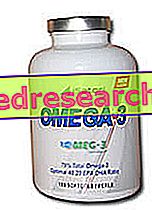What is that
Multiple Chemical Sensitivity, in English Multiple Chemical Sensitivity (MCS), is a chronic medical condition characterized by total intolerance to an environment, or rather to a category of chemical substances;

Because of its ambiguity, MCS has not yet been recognized by most of the scientific communities concerned; however, some institutions (such as the National Institute of Environmental Health Sciences ) have already launched several experimental and analytical pathways to deepen their knowledge and etiological pathologies, to the point that different specialists consider Multiple Chemical Sensitivity as the disease of the new millennium .
Real or presumed disease?
On the other hand, in the various investigations, not all research institutions have found the same results and many others do not share the theory that MCS can be triggered by mechanisms and factors of an ORGANIC type; in reverse! It is assumed that this may be a psychosomatic or psychological somato-form reflex related to other disorders of the emotional and / or psychiatric sphere ... after all, the correlation between psychiatric comorbidity and Multiple Chemical Sensitivity reaches as much as 75% of the overall series. In support of this hypothesis, in the course of clinical studies it was seen that patients with presumed MCS reacted to placebo (perfectly pure air) similar to the offending substances. Furthermore, most patients respond positively to therapy with antidepressant drugs, relaxation techniques and psychotherapy.
For those who support the real existence of MCS, this EXCESSIVE reaction of the organism, even after exposure to very low chemical concentrations, has a completely logical and acceptable scientific foundation:
the body's defense system is different for everyone and does not have the same resistance, efficacy and tolerance towards chemical and synthetic allergens; however, this does not mean that these molecules are totally harmless! In some cases (perhaps due to increased exposure or reduced resistance), the immune system reaches full saturation triggering even very serious allergic reactions.
The organs most affected by the MCS are the liver (in charge of the molecular re-processing of chemical substances) and the kidneys (responsible for the elimination of chemical molecules), even if we carefully analyze the various symptoms, we realize that it is potentially a matter of Psycho-somatic reflexes, rather generic and rather common.
Symptoms
Symptoms and Complications of Multiple Chemical Sensitivity
breathing difficulties, chest pains and asthma, skin irritation, contact dermatitis, hives and other forms of rash, migraine, "clouding" (short-term amnesia, cognitive dysfunction), acute and sudden personality changes (panic attacks, phobias, unmotivated aggressiveness), digestive difficulties, nausea, indigestion, heartburn, vomiting, diarrhea, food intolerances (lactose and celiac disease), joint muscle pain, lethargy, dizziness, hypersensitivity to terpenes ... and still depression and / or anxious states of various kinds and kinds .
The real existence of organic factors underlying the Multiple Chemical Sensitivity is still the subject of numerous discussions and controversies, and it is assumed that it will remain so at least until the discovery (or the denial) of concrete arguments that can justify the specific etiological pathways underlying of this increasingly common disorder among the general population.
Treatment
The most logical treatment to solve the problems of Multiple Chemical Sensitivity consists in removing the offending substances from their home and work environment, a rather difficult objective given their widespread diffusion in the environment. Psychological and bodily "purification" techniques can also be successful (depurative diet free of processed foods and additives, physical activity and trips in close contact with nature, meditation and relaxation techniques ...). Anxiolytics and sedatives can be attempted as a second-line intervention once the failure of the aforementioned behavioral interventions is ascertained.



